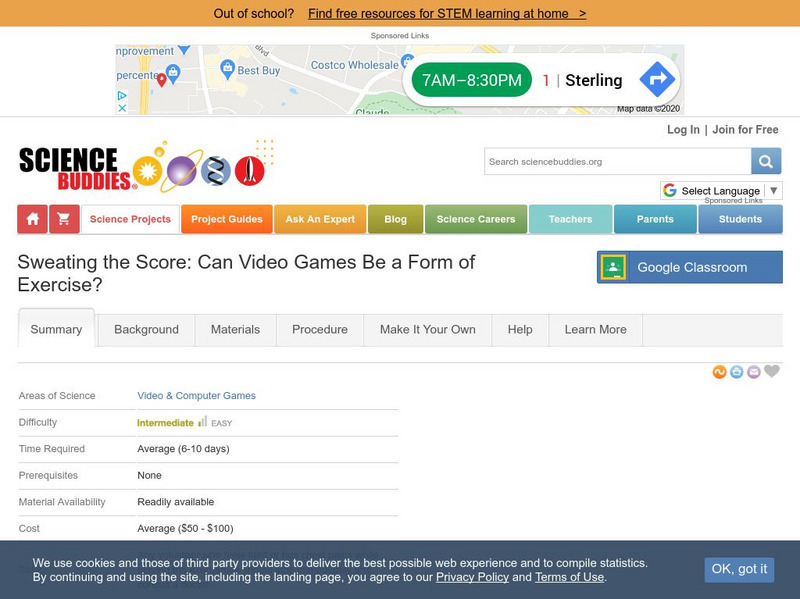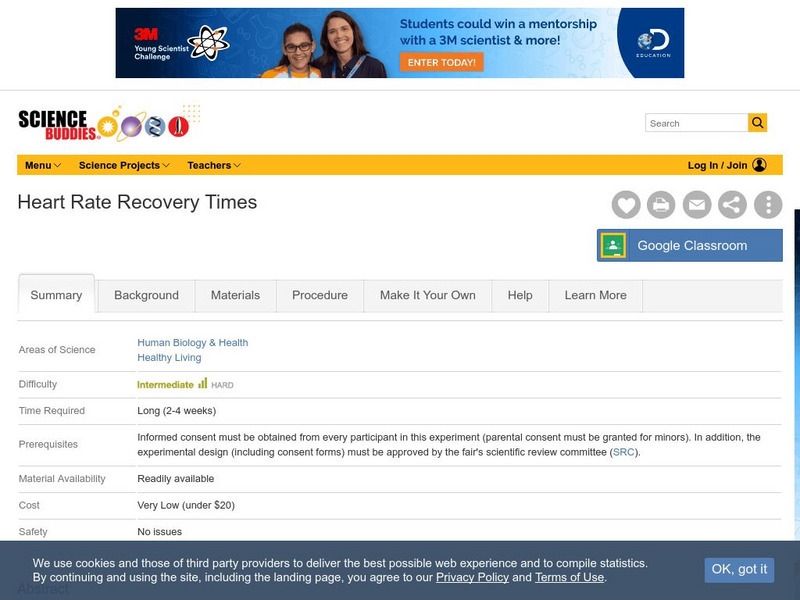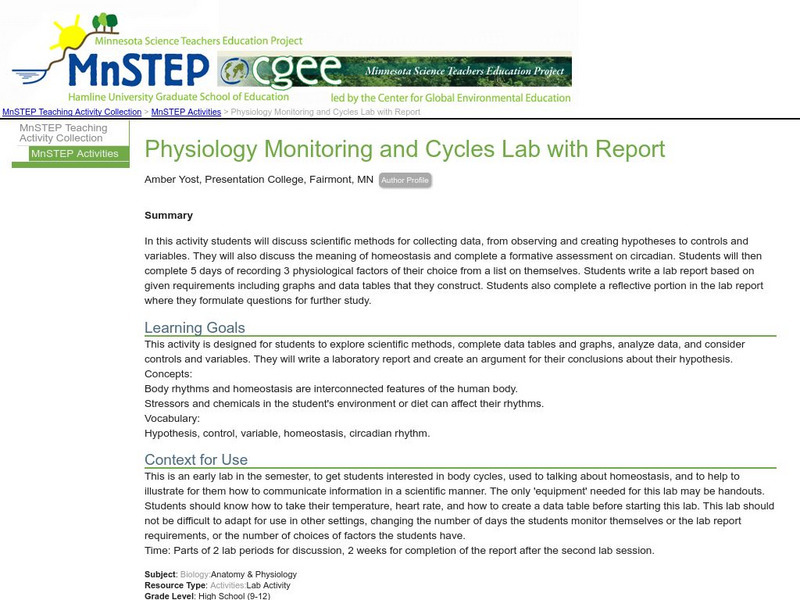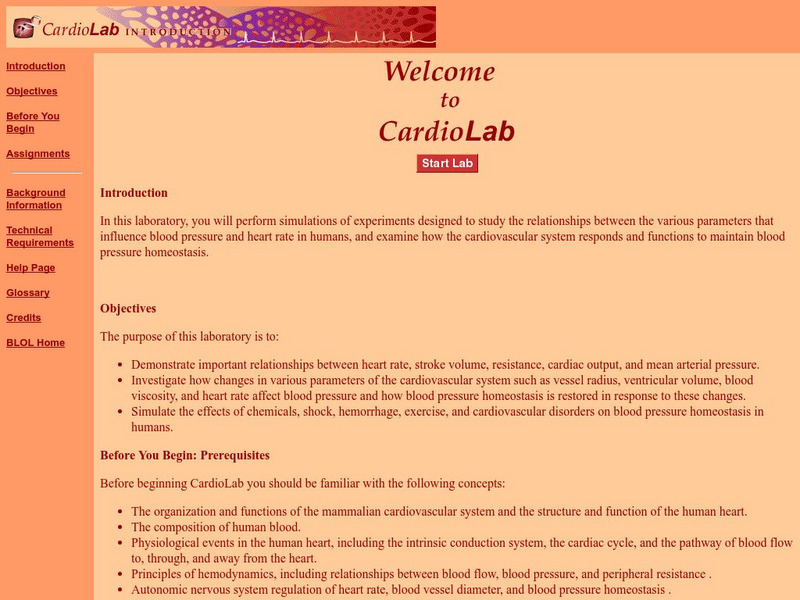Science Buddies
Science Buddies: Sweating the Score: Can Video Games Be a Form of Exercise?
The majority of video games are sedentary, meaning done in one position, but there is an increasing trend toward video games where the players are physically active. Whether or not these type of video games can be considered exercise is...
Science Buddies
Science Buddies: Heart Rate Recovery Times
After exercise, your heart rate increases, this is normal for everyone. However this experiment asks whether the recovery time for a heart's beating rate is faster for people who get regular exercise versus those that do not.
Science Buddies
Science Buddies: Caffeine and Heart Rate: A Pharmacological Study Using Daphnia
In this project, water fleas (Daphnia magna), a semi-transparent freshwater crustacean, are used to study the effects of caffeine on heart rate. You do not have to learn how to take a crustacean's pulse though, because you can actually...
Science Buddies
Science Buddies: A Day in the Life of Your Heart
Heart rates can be determined by the amount of physical activity your body is engaging in. The more physically active you are, the faster your heart beats. You can measure the rate your heart is beating by taking your pulse. This science...
Science Education Resource Center at Carleton College
Serc: Physiology Monitoring and Cycles Lab With Report
Using physiology monitoring, students will understand how to collect data using scientific methods in this activity. Students will also learn how to communicate the finding in a lab report. Physiology monitoring will include measuring...
BioEd Online
Bio Ed Online: The Science of the Heart and Circulation
In this unit teachers will evaluate student's current understanding of the heart and circulatory system through a pre-assessment. They will develop group concept maps and then repeat the assessment. Teachers can compare their prior...
BioEd Online
Bio Ed Online: Respiratory System
In the following lessons for k-5 students are introduced to the structures within the human respiratory system.
BioEd Online
Bio Ed Online: Heart Rate and Exercise
In this activity middle schoolers will measure their heart rates after a variety of physical activities and compare the results with their resting heart rates, and with the heart rates of other students in their groups.
Other
California State University: Biology Labs Online: Cardio Lab
A comprehensive set of virtual experiment assignments where students explore the roles of blood pressure and heart rate in maintaining a balanced cardiovascular system. Includes background information, glossary, online notebook, and...
PBS
Pbs Learning Media: Body Control Center
Throughout the day, your nervous system monitors and makes endless adjustments to your body's basic systems--all to keep you alive. This interactive feature illustrates the complexity of such a task.
Texas Instruments
Texas Instruments: Heart Rate and Body Position
In this activity, students can use a Heart Rate Monitor to measure their heart rate while sitting, lying down, and standing. They will analyze the data collected to determine the effect of body position on heart rate.
PBS
Pbs Nova Online: Amazing Heart Facts
This concise PBS NOVA site contains interesting facts about the heart and how it works.
TeachEngineering
Teach Engineering: The Beat Goes On
In this activity, students learn about their heart rate and different ways it can be measured. Students construct a simple measurement device using clay and a toothpick, and then use this device to measure their heart rate under...
Mayo Clinic
Mayo Clinic:target Heart Rate Calculator
Check your target heart rate for safe and effective exercise according to your age and health status in this interactive heart rate calculator
PBS
Pbs Learning Media: Sci Girls: Heart to Heart
In this activity, learners compare ways to measure their heart rates. They will build their own stethoscopes and learn how exercise affects heart rate.
Michigan State University
Michigan State University: Lets Net: Heart Rate
In this experiment, students will compare heart-rates of classmates and family member to draw conclusions about their data. Students can collect data and collaborate with others on the Internet to broaden their sample size. Lesson...
Science Museum of Minnesota
Lesson Plan: Go With the Flow
In this effective site, learners will name the parts of the heart and trace the flow of blood through the body. Contains related links.
Science Museum of Minnesota
Lesson Plan: Lub Dub (Valves)
In this concise site, students investigate the source of the sounds of the heart. Contains related connecting links.
Science Museum of Minnesota
Lesson Plan Site: Sounds of the Heart
In this site, students investigate the sounds of the heart, construct a stethoscope, and investigate the workings of valves.
Science Museum of Minnesota
Lesson Plan: Pulse of Life
Students measure their pulse rate and explore how heart rate is affected by various activities.
University of Arizona
The University of Arizona: Pressure and Blood Flow
Article that explains what two things control our blood pressure. Part of a larger page on Mathematics and Blood Flow. Includes a quiz on pressure difference and resistance at bottom of the page.
National Institutes of Health
National Library of Medicine: Your Beating Heart
In this lesson plan site, the students will learn about the circulatory system and perform an experiment where they take their pulse after various activities.













